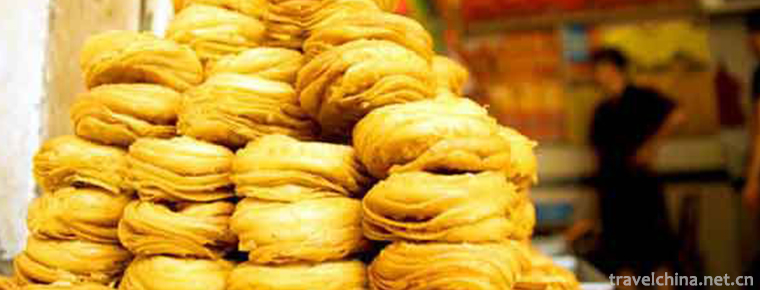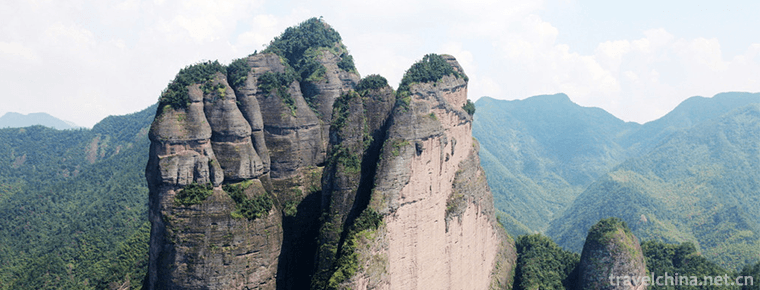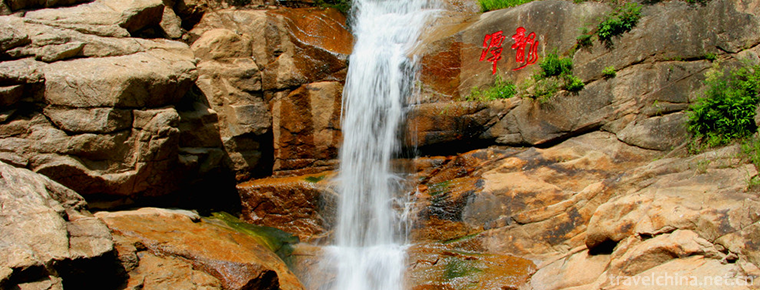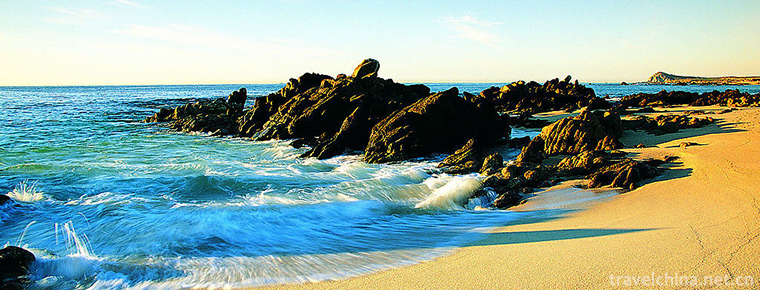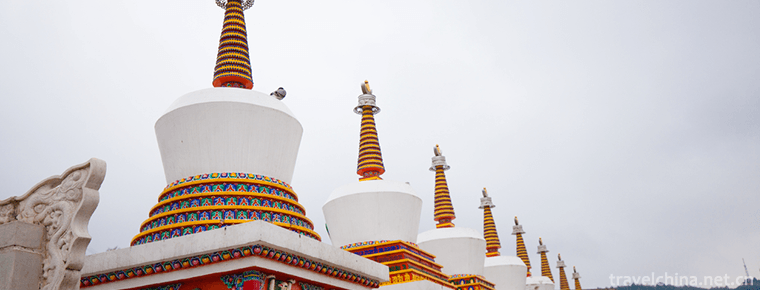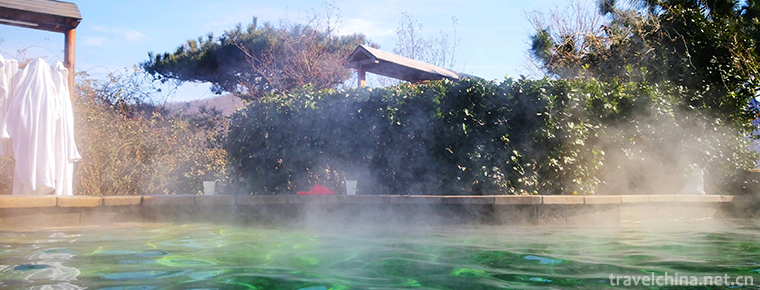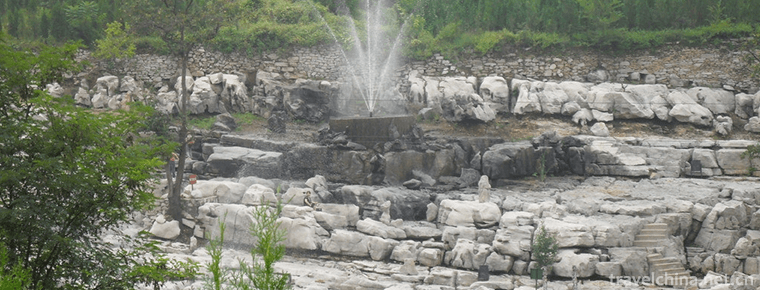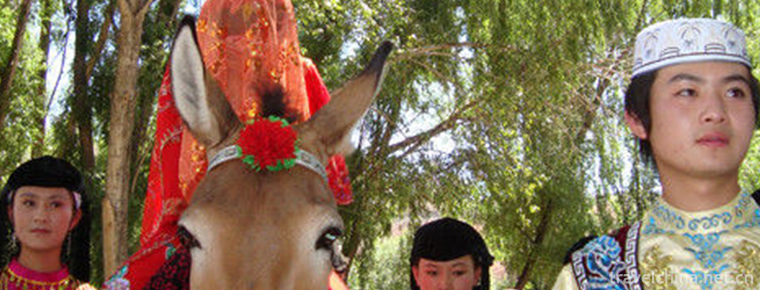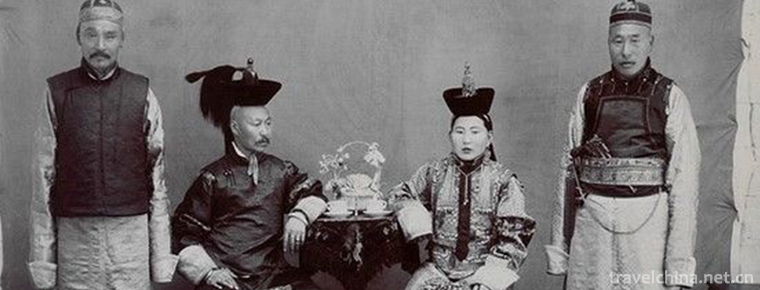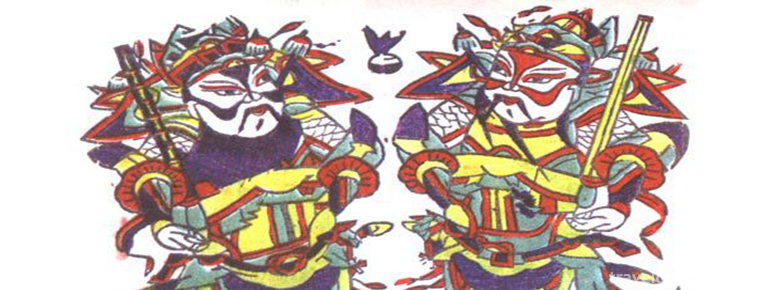Machirev
Machirev
Machirev is a name for a form of dance and entertainment, which refers to a large-scale self-entertainment activity with a large number of participants (the so-called participation refers to those who are present without audience but are all participants in the activity), mainly singing and dancing.
introduce
The Daolang people living in the middle and lower reaches of the Yerkang River in Maigaiti County are descendants of the Mongol Hui people in history. Their obsession with music and dance makes it difficult for outsiders to understand. Sometimes a burst of music came. The peasants in the fields immediately put down their tools. The pedestrians on the road took off their coats and threw down their moustaches. Then they began to dance with rapture. Machirev is a name for a form of dance and entertainment, which refers to a large-scale self-entertainment activity with a large number of participants (the so-called participation refers to those who are present without audience but are all participants in the activity), mainly singing and dancing. There are songs and dances, games and raps, as well as living room, welcoming and harvest. The most common is the harvest of Machiavelli. Every place has its own Machiavelli, the style is similar, but the Daolang people's Machiavelli is the most distinctive. Daolang Machiavelli is enthusiastic, intense and unrestrained. In the organized activities of Machiavelli, no one will pass up the chance of dancing addiction. Playing games is an indispensable part of Massiev's program. Belt grabbing is the most common game. There are two people in the game. A should try to pull the belt onto B, while B should try to grab the belt into his own hands in the process of avoidance. The person who holds the belt has the right to choose his own game object. Brief Introduction to Daolang Maxirev in Maigaiti County, Xinjiang
Maigaiti County of Xinjiang is located in the southwest of Xinjiang Uygur Autonomous Region, Eastern Kashgar region, western Tarim Basin, middle and lower reaches of Yerqiang River and lower reaches of Tiznafu River (longitude 7728-7905, latitude 3825-3922). Located in the Yerqiang River impact plain. There are three farms in one town and nine townships under the county jurisdiction, with a total population of about 207,700, including Uygur, Han, Hui and Kazakhstan.
About 89% of the 13 ethnic groups, such as Sark, are Daolang Uygurs who are good at singing and dancing. They are typical areas inhabited by ethnic minorities.
Daolang Messirev has a long history. It is said that it originated from the indigenous culture of the Western Regions and was deeply influenced by Islamic culture. Some experts believe that in the Uygur ancestors engaged in fishing and hunting, animal husbandry life period, produced in the wilderness, mountains, grasslands, courtyards and extemporaneous expression of ambition singing and dancing. In the course of thousands of years of social and historical development, the Daolang Uyghurs enriched all kinds of life materials into Daolang Maxie Refu and formed a unique Daolang culture. It mainly spreads among the Uygur people in the Daolang area in the northwestern margin of the Tarim Basin, with the Yerqiang River to the Tarim River Basin as the center, and among them, Maigaiti County in southern Xinjiang is the most widely inherited area.
Daolang Maxirev mainly shows the Uygur people's hunting style, happy harvest and happy life in Daolang area in the long-term life practice. "Daolang Machirev" includes "Daolang Mukam" singing, mass entertainment dance, catering, literary and artistic performances and various games. It is not limited by environmental conditions, time and the number of participants. It has many kinds and rich contents. According to its nature and function, Daolang Maxie Refu can be roughly divided into seven types: 1. Joyful marriage to Maxie Refu. 2. Invite Massie Rev. 3. Take turns to be East Maisy Refu. 4. Apologize to Machiavelli. 5. Bachelor Massey Rev. 6. A bumper harvest of Machiavelli. 7. Messi Refu.
With the accompaniment of music and dance in Daolang Mukam, the most important content of Daolang Messierfu is the mass's entertainment dance. Each set of "Daolang Mukam" rhythm, different rhythm of each piece of music will be divided into four stages of this dance, the first stage, and Ktmann. The second stage, Senem. The third stage, Selekex. The fourth stage, Salelima.
Among the various rounds of mass self-entertainment dances, games such as robbing Dai Fei, passing drums, poems, riddles, tea-offering couplets, and teasing and entertaining punitive programs such as "baking steamed buns", "pressing oil", "knotting knots", "photographing" and "marrying two wives" are also arranged, which greatly enrich the performance form of Daolang Maxie Refu. People use songs to dispel depression, dance to dispel fatigue, and get spiritual satisfaction in leisurely and exaggerated performances.
The characteristics of Daolang Machirev are as follows: 1. The dancing postures are endless and enthusiastic. 2. The number of participants is large and the lineup is huge. 3. It is not limited by time and place. It can be held in square, orchard, courtyard and field at any time. 4. It is a stage for the cultivation of folk artists of Daolang Machirev. It is also a melting pot and cradle for the cultivation of Daolang people's sentiments and the healthy growth of young people. 5. It is a good way to adjust the monotonous cultural life of the rural masses. 6. It is an important part of Daolang Uyghur's daily life. Whether it's Noluz Day, May Day, Eleventh Day, Gurban Day, harvest, marriage and other festive days, there is no lack of Daolang Messierfu. 7. Rich in connotation. It is different from other Massey Refu's movements from beginning to end. It is a combination of double dancing and group dancing. Dance interweaves with various performances and punitive games. It has a strong observability. Everyone is not only a participant but also a performer, and the performer is also an audience. It can take turns to regulate the rest. 8. Because the geographical environment is relatively closed and less influenced by other Uygur dances, it always maintains the original ecological characteristics of Tu nationality's songs and dances in Tarim.
The artistic value of Daolang Machirev. 1. Academic value. Daolang Maxie Refu is a reflection of all aspects of Daolang Uygur society. Its excavation, rescue and protection will promote the development and promotion of Daolang Maxie Refu. His rich content, basic characteristics and inheritance history are rare in the whole Chinese music and dance culture. To explore and protect Daolang Maxie Refu is of great importance to enrich Chinese music and dance culture.
The influence of Daolang Machirev. Daolang Machirev is a kind of cultural activity for Daolang Uyghur people to enjoy themselves. It is rich in content and frequently used. Every time Daolang Machiavelli was held, he wore festival dress, traveled mountains and rivers, crossed deserts, crossed the Gobi, and gathered to attend the Daolang Machiavelli Festival on the prescribed occasions, regardless of the distance. Every activity can increase people's knowledge, face-to-face exchange of emotions, cultivate sentiments, teach people to learn the truth of life. It is also the cradle of training and training folk artists. At the same time, it also has the function of maintaining social stability and building a harmonious society. In 2006, it was listed on the national and autonomous region intangible cultural heritage list.
Classification
Contemporary Uygur people often hold a variety of names of "Maxi Refu", which can be roughly divided into the following categories:
festival
(1) Maxi Rev, which is related to festivals. For example, in order to celebrate the arrival of Uygur traditional festivals such as "Gurbang Festival" (Eid al-Adha), "Meat Zi Festival" (Eid al-Fitr), "Nu Nu Zi Festival" (Ying Chun Festival) and "National Day" and "Labor Day" in today's social life, the "Bayram Messirev" (also known as "Ait Messirev") was held. It means "festival Messi Rev". It is held on such festive days as the marriage of men and women, the birth of the first child by women, the naming of children, the circumcision of boys and the adulthood of girls. Its scale is grand, atmosphere is grand and warm.
Agricultural and animal husbandry production
(2) Maxi Refu, which is related to agricultural and animal husbandry production. For example, in winter, when the first snow falls, the "Karl-lek Massey Reef" (meaning "Welcoming Snow Massey Reef"), the "Maysha Massey Reef" (meaning "Green Miao Massey Reef") held after the first snow, and the "Molhu" held after the harvest of agriculture. Sulmaxirev (meaning "harvest Macirev"), Bahe Macirev (meaning "orchard Macirev") held in the orchard when melons and fruits are ripe, and Kawapo Macirev (meaning "roast meat Macirev") held when cattle and sheep are strong. Its main purpose is to express the desire for a bumper harvest in agriculture and animal husbandry and the joy after harvest. Its scale is different, the atmosphere is happy and happy.
Social affair
(3) Machiavelli related to social activities. For example, "Mimandachel Machiave" (meaning "Welcome Machiave"), who comes from afar, introduces adult children to "Ayilai Machiave" of relatives and friends, and "Kerry Machiave", who asks for forgiveness after doing something wrong, for the purpose of forgiving and regulating relations. Hiturhi Massiev, the "Selai Massiev" held in spring, and the "Qatar Massiev" held in the leisure time of agriculture, which means "taking turns to be East Massiev", etc. In addition to entertainment and gathering, this kind of Machiavelli also has the functions of consultation and mutual help. Participants are usually friends and relatives within a certain range, with a moderate scale.
Folklore Activities
(4) Mini-Machiavelli related to folk activities. This kind of Messierfu is also called "Chai Yi". For example, "Mesley Attichay" held for the purpose of agreeing on something, "Hoshlich Sichai" held for the purpose of seeing off friends, and "Kashyyi Sichai" held for the purpose of welcoming friends back, both of which can be collectively referred to as "Separchai", and "Tam" held to celebrate the joy of building a new house or relocating. Chayi ("Tam" means "wall"), "Gayi Chayi" ("Gayi" means "place") and "Uyi Chayi" ("Uyi" means "home") and so on.
organization
The place where Massiev is held can be in the family yard, under the vineyard or on the orchard lawn. The number of participants varied from a dozen to a hundred or even thousands. Regardless of the size, everyone regards participation in Massiev as a major event.
The organizer of Massiev was called "Yizhi Tuobishi" (meaning "the leader of a young man"), and he often acted as the host of the whole event. Under him, there are several assistants: the "Milwazi" (also known as "Milshap"), who is responsible for introducing programs and artists, reading rhyming verses of encouragement and praise to increase the atmosphere, collecting and distributing money and goods, and the "Hazibok" who is responsible for checking discipline and making decisions on violators according to the wishes of the host and the masses; In charge of the execution of rulings, the implementation of penalties, such as "government service" (Chinese transliteration), and so on. This rigorous organization ensures the normal order and smooth progress of various activities of Massey Rev. The time for holding Massiev can be determined by collective consultation between the host and the participants during the day or at night. At that time, people will gradually come to the venue in groups of three or five, first salute each other, shake hands and say happy words, and then sit in a circle according to the order of age. Everyone is immersed in a peaceful and happy mood.
Dance and Games
Mass self-entertainment dance is the main content of Massey Rev. At that time, sitting in a corner of the "Nairmanki" (meaning "musician") and "Dabandi" (meaning "drummer") sang local traditional songs and dances, including Mukam music. The beginning of the "scatterboard prelude" seemed to tell people that the joyous singing and dancing is about to begin, please be ready! Its function is similar to the opening Gong and drum in the Han opera. When music enters the rhythm, people will spontaneously get up and dance in circles, and can also be invited to dance together. In Kashgar, Shache, Hetian and other southern Xinjiang areas where "Twelve Mukams" are popular, the music of "Jura", "Sainem", "Dousalek" and "Maxielf" in the "Joanne Erman" section of "Maxielf" is mainly sung (played) for the masses to dance. In the northern Xinjiang Yili area, the music for the masses to dance is the "Messierfu" part of each Mukam. In Daolang area, Turpan area and Hami area, "Daolang Mukam", "Turpan Mukam" and "Hami Mukam" are all the preferred and the main music on various Messierfu. In Kashgar and Ili regions, there is a kind of Massiev, whose main content is to listen to "Dastan". During this period, the protagonist is "Dastan". They either sing folk "Dastan", or sing the "Dastan" section of "Twelve Mukams". The majority of the participants in this type of Messife were middle-aged and elderly people.
In Maxie Refu's activities in Hami, women dress themselves in local style clothes that are usually pressed on the bottom of boxes. Dancers holding flowers are still visible. After a round of dancing, they often hand over the flowers to dancers who are invited by themselves, and the flowers are passed on one by one in people's hands. 。 I don't know if this form of performance has anything in common with the "Huazhiling" game circulated in the Tang Dynasty.
There are no definite rules for Mass Self-Entertainment Dance in Massiev, but there are exceptions in Massiev in Daolang area, especially in McGetty and Bachu counties. After the dancers enter the circle, the rhythm becomes more and more tight as the music unfolds in the order of "Checktman", "Saim", "Selekel" and "Salima". The speed is getting faster and faster, and the dancing style is becoming more and more lively and warm from graceful and dignified. Dancers often dance in pairs in the "Jerktman" and "Sainem" sections, waiting for the music to enter the "Selekay" section, whether it is a young man or a young girl with bright looks, whether it is an old man with white hair or a woman with a flowery scarf, people will take the initiative to dance together. A large circle marches in formation. To the "Selima" section, the dancers not only continued to move in a circle formation, but also began their own rotation, just as the earth has to "rotate" as well as "rotate". The speed of the music is getting faster and faster. Some exhausted or spinning people have to leave the arena. The skilled winners add more spirit to the crowd's applause. The number of in-court dancers declined gradually, and the last two or three people continued to compete in rotation. The audience cheered, shouted and applauded one after another. The mood inside and outside the venue was warm and the atmosphere reached a climax. Only when the final winner of the highest skill was decided in the venue did the competition end.
Between each round of mass self-entertainment dance, games or performances are often interspersed. Uyghurs call the game Uyuen. The common "Uyuen" in Messierfu are riddles, poems, tea handing, drums handing in circles, and grabbing "Dai Lai". They are intended to test and exercise people's minds, or to test and exercise people's agility and flexibility, which is of great benefit to people's physical and mental health, but also contains the significance of communicating emotions and transmitting information.

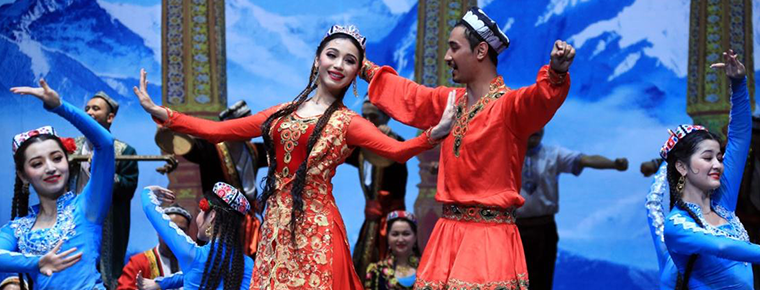
-
Anhui rescue
Anhui rescue Great rescue is a traditional feature of Shouxian County in Anhui Province, which has a history of more than 1000 years..
Views: 210 Time 2018-11-27 -
Jiang Lang Shan
Jianglangshan, formerly known as Yulangshan and Jinchunshan, is located in Shimen Town, Jiangshan City, Quzhou City, Zhejiang Province.
Views: 165 Time 2018-12-07 -
Longtan Ecotourism Resort
Lianzhou Longtan Eco-tourism Resort is a tourism project invested and constructed by Lianzhou Aidi Tourism Development Co., Ltd. of Qingyuan City. Based on the original Huangchuan .
Views: 141 Time 2019-01-19 -
Golden Sands Beach
Golden Beach is located in the southern end of Shandong Peninsula, the Yellow Sea coast of Qingdao Huangdao District, Golden Beach Road. It is bordered by the Yellow Sea in the South and stretches.
Views: 134 Time 2019-01-26 -
Tar Temple Scenic Area
Tar Temple, also known as Taer Temple, was founded in the 10th year of Hongwu Ming Dynasty (1377). Named after the Great Silver Pagoda built in memory of Zongkaba.
Views: 153 Time 2019-02-13 -
Taishan Hot Spring City
Taishan Hot Spring City Cultural Tourism Scenic Spot is invested and constructed by Shandong Taishan Hot Spring Tourism Development Co., Ltd. with a total investment of 2.6 billion yuan.
Views: 136 Time 2019-02-13 -
Kaiyuan Cave Tourist Area Zibo
The karst cave in Kaiyuan is named for the cliff stone carvings in Kaiyuan period of Tang Dynasty. It is large and tall with a length of more than 1100 meters. It is divided into six halls. The natura.
Views: 126 Time 2019-03-21 -
Printing and Dyeing Techniques of Liquidambar formosana
Maple fragrance dyeing and production technology, Guizhou Huishui County, Majiang County, local traditional skills, one of the national intangible cultural heritage..
Views: 224 Time 2019-04-29 -
Salar Wedding
Salar wedding ceremony is one of the most important ceremonial activities in Salar people's life etiquette. Salar traditional wedding ceremony is held in the midwinter of each year. From engagement to.
Views: 120 Time 2019-06-11 -
Tauk Taohu
Tao Ketaohu (May 13, 1864-April 1922), also translated as "Tao Ketao", Fuer Zhijin, Mongolian, the former Banner of Guoerros in Zhelimu League, Mongolian subordinate aristocrat of Nezhazazak.
Views: 97 Time 2019-06-18 -
Zhuxian Town Wood Print New Year Picture
Zhuxianzhen Wood Engraving New Year Picture is one of the ancient Chinese traditional crafts. As the originator of Chinese woodcut New Year pictures, is mainly distributed in Kaifeng, Zhuxian Town and.
Views: 134 Time 2019-08-10 -
Neijiang folk culture
Bull lantern dance is popular in Yuexi. One dressed as a shepherd boy and two dressed as cattle with cow shaped props. In the sound of gongs and drums, the shepherd boy first said doggerel to the audience to express the festival's congratulations, and then .
Views: 346 Time 2020-12-16
